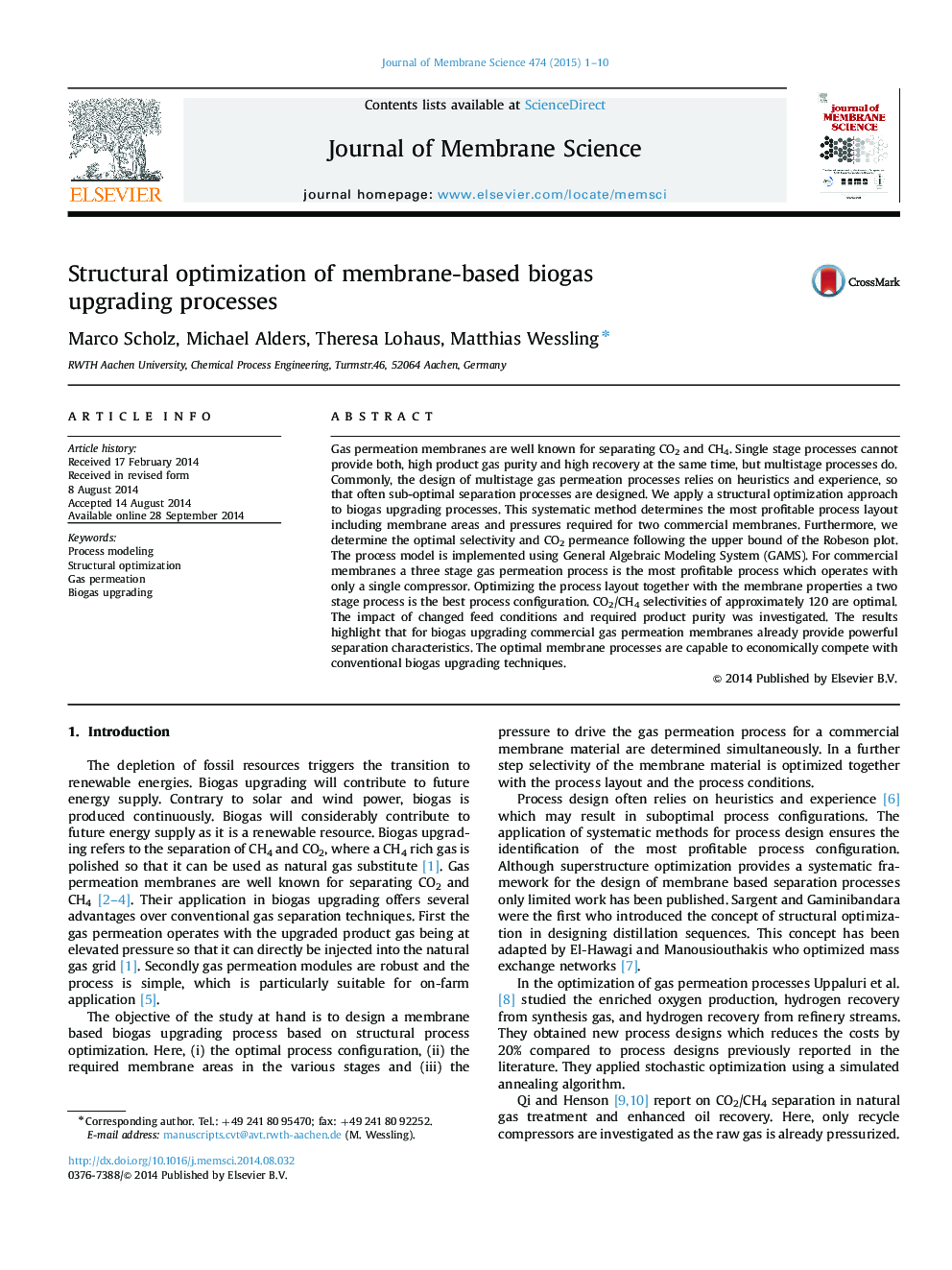| Article ID | Journal | Published Year | Pages | File Type |
|---|---|---|---|---|
| 633269 | Journal of Membrane Science | 2015 | 10 Pages |
•Process optimization model for gas permeation.•New biogas upgrading process.•Identifying optimal membrane materials.
Gas permeation membranes are well known for separating CO2 and CH4. Single stage processes cannot provide both, high product gas purity and high recovery at the same time, but multistage processes do. Commonly, the design of multistage gas permeation processes relies on heuristics and experience, so that often sub-optimal separation processes are designed. We apply a structural optimization approach to biogas upgrading processes. This systematic method determines the most profitable process layout including membrane areas and pressures required for two commercial membranes. Furthermore, we determine the optimal selectivity and CO2 permeance following the upper bound of the Robeson plot. The process model is implemented using General Algebraic Modeling System (GAMS). For commercial membranes a three stage gas permeation process is the most profitable process which operates with only a single compressor. Optimizing the process layout together with the membrane properties a two stage process is the best process configuration. CO2/CH4 selectivities of approximately 120 are optimal. The impact of changed feed conditions and required product purity was investigated. The results highlight that for biogas upgrading commercial gas permeation membranes already provide powerful separation characteristics. The optimal membrane processes are capable to economically compete with conventional biogas upgrading techniques.
